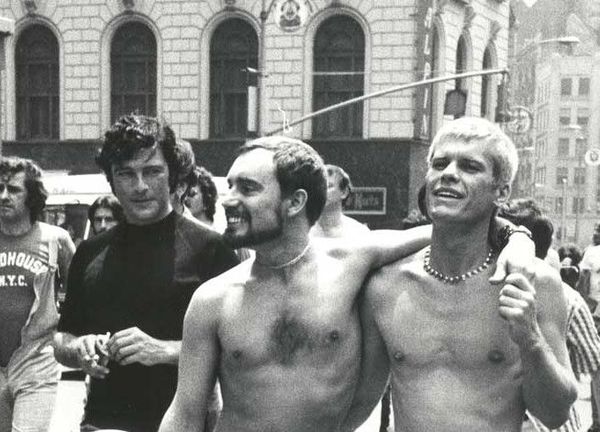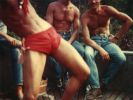Eye For Film >> Movies >> Gay Sex In The 70s (2005) Film Review
Gay Sex In The 70s
Reviewed by: Amber Wilkinson

Featuring fascinating archival footage and still images, this absorbing documentary offers an examination of the New York gay scene in the decade between the Stonewall riots - in which gay New Yorkers stood up to a bar raid by police - and the advent of AIDS. Director Joseph Lovett includes interviews with many of those lucky enough to have lived the scene to its fullest and survived to tell the tale, including author and activist Larry Kramer and photographers Alvin Baltrop and Tom Bianchi - many of whose pictures are used here.
They and others recall the shift from the lives they had known, often in provincial parts of the US - where homosexuality was at best simply brushed under the carpet and, at worst, an excuse for institutionalisation - to the heady days of Seventies Manhattan, described as "the most libertine period since ancient Rome". It's difficult, in many ways, to imagine the hedonism of the times but the candid and lively interviewees smile wryly as they recall the city was a "constant cruising opportunity" with sex going on openly in public in many areas, while nightfall brought the prospect of random sexual encounters in one of the many disused piers along the Hudson or, more dangerously, in the back of one of the pitch black empty trucks parked on the West Side.

As one interviewee puts it, "pornography couldn't compete" with real life where sex was frequently viewed as "the best way to break the ice". Images, footage - many of which, it must be noted, are explicit - and the interviews are accompanied by a very cleverly chosen soundtrack of songs from the period, embuing the film with a breezy sense of energy and place.
This is an immersive documentary, evoking the period, and arguing the case that although the unbridled hedonism did bring dangers and problems with it, there was also something of an idyllic euphoria experienced by those in this first wave of gay freedom, borne out of the repression that had gone before. Lovett handles the shift in emphasis between the crazy days - increasingly drug-fuelled and frenzied - of the late Seventies to the fear that gripped the community as a disease no one had heard of or could cure came to the fore. The grief experienced by those who survived is poignantly illustrated by shards of pottery, each bearing the face of a lost friend.
Although very strong in terms of mood, however, Lovett's film is, in places, frustratingly light on detail. While New Yorkers will doubtless be familiar with the geography of the city, including Fire Island - which became known as a gay paradise - those not already aware of the places discussed may find this whistlestop tour somewhat confusing. With its emphasis on memory and nostalgia rather than fixed historical detail, this is not quite the all-round documentary it might have been, but as an evocation of a place, time and a moment of emancipation and its subsequent legacy, it is pretty hard to beat.
Reviewed on: 02 Jul 2010


















